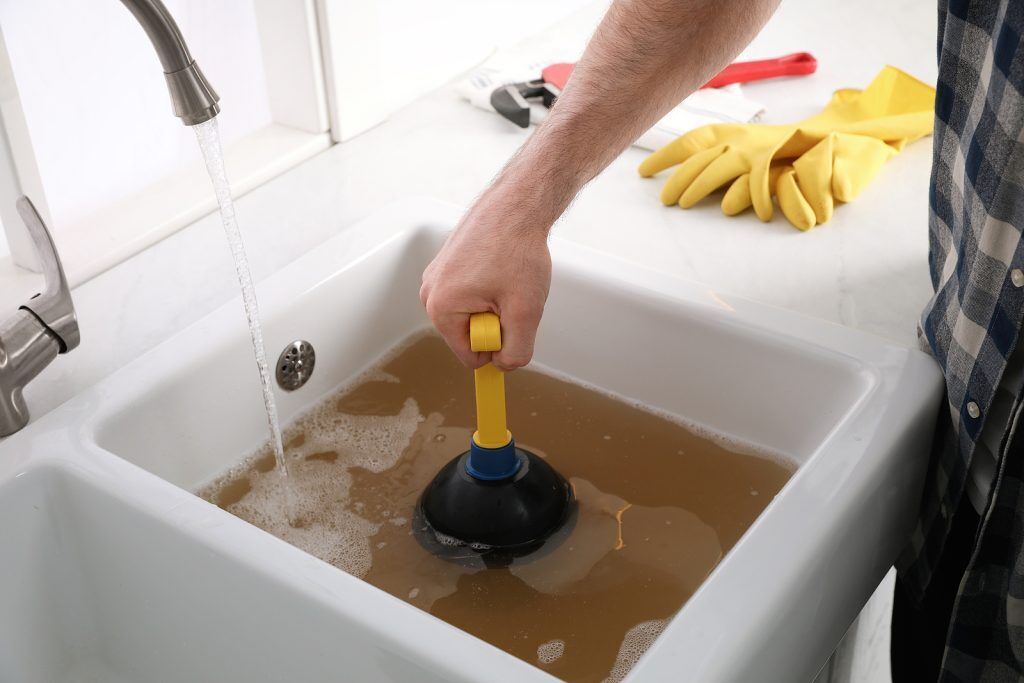Tips to Master Plungers and Drain Cleaner: Professional Guidance
Tips to Master Plungers and Drain Cleaner: Professional Guidance
Blog Article
Almost everyone seems to have their unique conception with regards to Here's How to Correctly Use a Toilet Plunger.

Intro
Appropriate maintenance of household drains pipes is necessary for stopping blockages and ensuring smooth water flow. One of the secret tools in every property owner's toolkit is the bettor, along with various drain cleansers made to take on persistent blockages successfully. This post checks out how to utilize bettors and drain cleaners properly to keep your drains pipes flowing openly.
Area 1: Comprehending Bettors
Kinds of Plungers
There are a number of types of bettors readily available, each made for various kinds of drains and obstructs. The most common kinds include mug bettors, flange bettors, and accordion plungers.
How Plungers Work
Bettors work with the concept of creating stress and suction to dislodge blockages. When appropriately applied over a drain, they produce a vacuum cleaner that can take out particles or separate blockages.
Choosing the Right Plunger
Choosing the best plunger depends on the type of drainpipe and the nature of the obstruction. Mug plungers are suitable for sinks and bathtubs, while flange plungers are better matched for bathrooms because of their design.
Usual Blunders with Bettors
Avoiding these mistakes ensures efficient plunging: incorrect seal around the drainpipe, insufficient force, and not clearing bordering particles.
Area 2: Making Use Of Plungers Effectively
Prep work
Prior to diving, make certain the bettor covers the drain totally and forms a tight seal. Clear any kind of noticeable debris around the drain opening.
Strategy
Begin with gentle diving activities to develop suction. Increase stress slowly, using a constant rhythm. Repeat as needed until the drainpipe clears.
Repairing Tips
If plunging does not work, attempt changing the seal, using petroleum jelly for a far better seal, or utilizing a various type of bettor.
Area 3: Recognizing Drainpipe Cleaning Company
Sorts Of Drainpipe Cleaners
Drain cleansers can be chemical or chemical. Chemical cleansers make use of solid chemicals to liquify obstructions, while chemical cleaners utilize natural enzymes to break down organic matter.
How Drainpipe Cleaning Company Job
Chemical cleaners react with clogs to dissolve them, while chemical cleansers break down organic materials like hair and oil without hurting pipes.
Safety Considerations
Always use handwear covers and eye protection when utilizing chemical drainpipe cleansers. Make certain ample air flow and comply with manufacturer guidelines carefully.
Eco-Friendly Alternatives
Take into consideration utilizing vinegar and cooking soda or enzyme-based cleansers for environment-friendly alternatives that are much safer for pipelines and the setting.
Section 4: Using Drainpipe Cleaning Company Properly
Application Strategies
Put chemical cleansers directly into the drainpipe opening. Permit them to benefit the suggested time before flushing with warm water. Chemical cleaners need to rest overnight.
Precautions
Stay clear of blending different sorts of cleaners, as this can produce poisonous fumes. Never make use of chemical cleansers in conjunction with a plunger, as splashing can occur.
Handling Stubborn Clogs
For persistent clogs, consider making use of a pipes serpent or calling an expert plumbing to prevent damage to pipelines.
Final thought
To conclude, understanding how to make use of plungers and drain cleansers successfully is vital for maintaining healthy and balanced plumbing systems. By picking the right tools and strategies, house owners can tackle small blockages and avoid major pipes concerns down the line.
4 DIY Ways to Unclog Drains
Wire Hanger
This age-old technique has been used by many an amateur plumber – to much success. Take any wire hanger, deconstruct its shape and leave a small hook shape on the end. Time to go fishing! Remove the shower or sink drain cover and snake the wire into the drain, wiggling and rotating it as you push it through. Dispose of the gunk that you remove and flush the drain with hot water. Rinse with a pan of boiling water for best results.
Plunger
Creating a suction in your drain can break up clogs caused by hair and soap residue build up. First, make sure you are using the correct type of plunger, one specifically for sinks or tubs. They are typically smaller than regular toilet plungers and often have a shallow suction cup. Regular plungers can work too but we’d recommend cleaning them first and finding a way to create better suction over the drain.
Baking Soda and Vinegar
This technique is a classic – and one of the most popular DIY drain unclog methods. Pour one cup of baking soda and one cup of vinegar down the drain and allow it to work its magic overnight. The next morning, flush the drain with boiling water. Repeat if necessary.
Drain Snake/Hair Clog Tool
If you know your clog is caused primary by hair, a drain snake/hair clog tool might be your best option. These tools can be purchased for under $10 at any hardware store and work well so long as the clog isn’t too deep in the drain.
https://www.callcatons.com/blog/four-diy-ways-to-unclog-drains/

Application Strategies
Put chemical cleansers directly into the drainpipe opening. Permit them to benefit the suggested time before flushing with warm water. Chemical cleaners need to rest overnight.
Precautions
Stay clear of blending different sorts of cleaners, as this can produce poisonous fumes. Never make use of chemical cleansers in conjunction with a plunger, as splashing can occur.
Handling Stubborn Clogs
For persistent clogs, consider making use of a pipes serpent or calling an expert plumbing to prevent damage to pipelines.
Final thought
To conclude, understanding how to make use of plungers and drain cleansers successfully is vital for maintaining healthy and balanced plumbing systems. By picking the right tools and strategies, house owners can tackle small blockages and avoid major pipes concerns down the line.
4 DIY Ways to Unclog Drains
Wire Hanger
This age-old technique has been used by many an amateur plumber – to much success. Take any wire hanger, deconstruct its shape and leave a small hook shape on the end. Time to go fishing! Remove the shower or sink drain cover and snake the wire into the drain, wiggling and rotating it as you push it through. Dispose of the gunk that you remove and flush the drain with hot water. Rinse with a pan of boiling water for best results.
Plunger
Creating a suction in your drain can break up clogs caused by hair and soap residue build up. First, make sure you are using the correct type of plunger, one specifically for sinks or tubs. They are typically smaller than regular toilet plungers and often have a shallow suction cup. Regular plungers can work too but we’d recommend cleaning them first and finding a way to create better suction over the drain.
Baking Soda and Vinegar
This technique is a classic – and one of the most popular DIY drain unclog methods. Pour one cup of baking soda and one cup of vinegar down the drain and allow it to work its magic overnight. The next morning, flush the drain with boiling water. Repeat if necessary.
Drain Snake/Hair Clog Tool
If you know your clog is caused primary by hair, a drain snake/hair clog tool might be your best option. These tools can be purchased for under $10 at any hardware store and work well so long as the clog isn’t too deep in the drain.
https://www.callcatons.com/blog/four-diy-ways-to-unclog-drains/

We were shown that write-up about Tips on How to Effectively Use a Plunger from a pal on another web page. Sharing is good. Who knows, you could be helping someone out. I love reading our article about .
Suggested Site Report this page